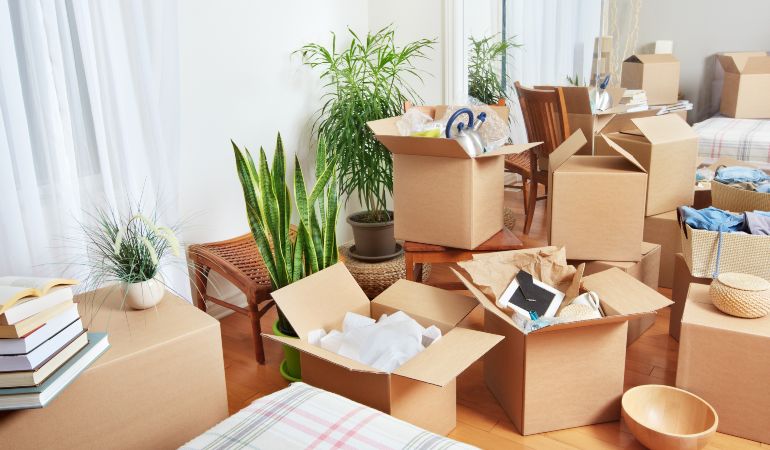It is never easy to move out of your home. However, if you are a gardening lover and have many plants in your home, it can be a difficult episode.
We should not let that happen and try to bring that little piece of our memories to our new place.
There are many aspects to consider.
So how to ship plants long distance move? Many problems can occur when we have to move plants. We will not always be able to plan and implement the correct procedures to get our plants moved as efficiently as possible. It is important to decide if it is worth removing plants that need extra care from their “home”.
Before you take the plunge, ask these questions:
- What is the size of the plant you want to transport? It is important to know how large the plant is.
- Does it have the ability to survive in my climate conditions? It is important to determine if the area you are moving to can withstand the plant. Not all plants can adapt to different climates.
- How much space will I have in my new house? It is important to understand that you must have enough land to allow your plants to grow. It’s futile to attempt to move many plants if they are going to be crowded for a time. Soon, we find out that these plants will not survive.
Are you ready to transplant your plants now? It is important to know that certain seasons are more suitable for transplants than others. These include Winter and Summer.
Preparing the plant to be transported.
When removing a plant from its place of origin, the first thing to consider is its size. The greater the plant’s size, the more land we need to remove in order to protect its roots.
The key to successful plant removal is in the roots. The more roots we take out of the soil, the better our chances of transplant success and the less pain we inflict upon the plant.
A large portion of the original soil should be retained, which is why we will transport your plant along with some of the soil surrounding the roots.
First, you need to consider creating a perimeter that is as close to the calculation of the roots as possible. As we’ve said, much of success lies in the roots so it is important to dig deep enough to ensure no roots are left in its old ground.
After the operation is complete, you will need a container or flowerpot ready to place the soil and the roots together.
During the plant’s moving process
Your plant is most at risk from excessive heat, dehydration, and wind during transport. You should transport your plants in a closed vehicle that isn’t airtight. Excessive wind can cause irreparable damage to your plants.
You should ensure that your plants are properly hydrated during long journeys.
If transport is in a closed vehicle you should ventilate the area where plants are placed. This will help to prevent heat buildup and condensation.
Avoid direct sunlight through windows and moons. This can cause a “magnifying effect” on your plant. The constant sun can quickly burn your plants. Also, if you are in Canada you should know the best way of shipping furniture across Canada.
After reaching your destination.
Plants are our most valuable assets. They will require a quicker relocation. It is important that the plant doesn’t suffer too much from the transplant.
Also, it is important to prepare the plant’s new home by digging in the appropriate space for the new roots and the earth we are moving. It should be large enough to accommodate the new roots, but later we will need to add soil or a special nutrient like “compost”.
After the plant is relocated, we will water it enough to reach the roots. We won’t stretch the area, so the roots don’t fall off.
It is best to cover the skin as much as possible during direct sunlight.
If the temperature is high, you can make a small mantle to protect the stem or trunk from drying out. You can make the mantle with dried leaves, straw, grass, bark, or other materials.
Remember that your plants should be taken care of as soon as possible. These little tips may prove helpful.
Also, don’t forget to check the other related and useful articles here.





